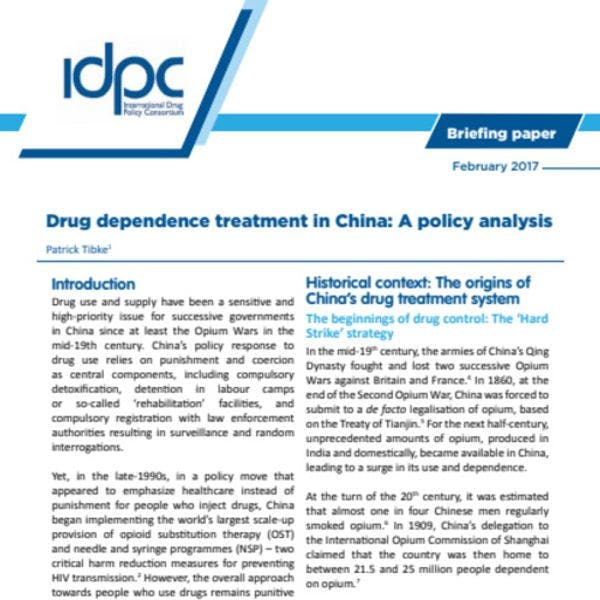Tratamiento para la dependencia de drogas en China: Un análisis de las políticas públicas
Este informe del IDPC ofrece un análisis del sistema actual de tratamiento para la dependencia a las drogas en Chian y avanza recomendaciones para asegurar su eficacia. Más información, en inglés, está disponible abajo.
Suscríbase a las Alertas mensuales del IDPC para recibir información sobre cuestiones relacionadas con políticas sobre drogas.
Drug use and supply have been a sensitive and high-priority issue for successive governments in China since at least the Opium Wars in the mid-19th century. China’s policy response to drug use relies on punishment and coercion as central components, including compulsory detoxification, detention in labour camps or so-called ‘rehabilitation’ facilities, and compulsory registration with law enforcement authorities resulting in surveillance and random interrogations.
Yet, in the late-1990s, in a policy move that appeared to emphasize healthcare instead of punishment for people who inject drugs, China began implementing the world’s largest scale-up provision of opioid substitution therapy (OST) and needle and syringe programmes (NSP) – two critical harm reduction measures for preventing HIV transmission. However, the overall approach towards people who use drugs remains punitive and stigmatising in China. As drug use continues to rise and expand across a greater range of drugs (especially synthetic drugs such as methamphetamine), as well as amongst younger age groups, China requires a comprehensive system of evidence-based and humane drug treatment and harm reduction services capable of advancing the health and quality of life of individuals and communities.
This IDPC briefing paper provides an analysis of the current drug treatment system in China and offers recommendations for ensuring its effectiveness.
Keep up-to-date with drug policy developments by subscribing to the IDPC Monthly Alert.
Descargas
Regiones
Perfiles relacionados
- International Drug Policy Consortium (IDPC)
